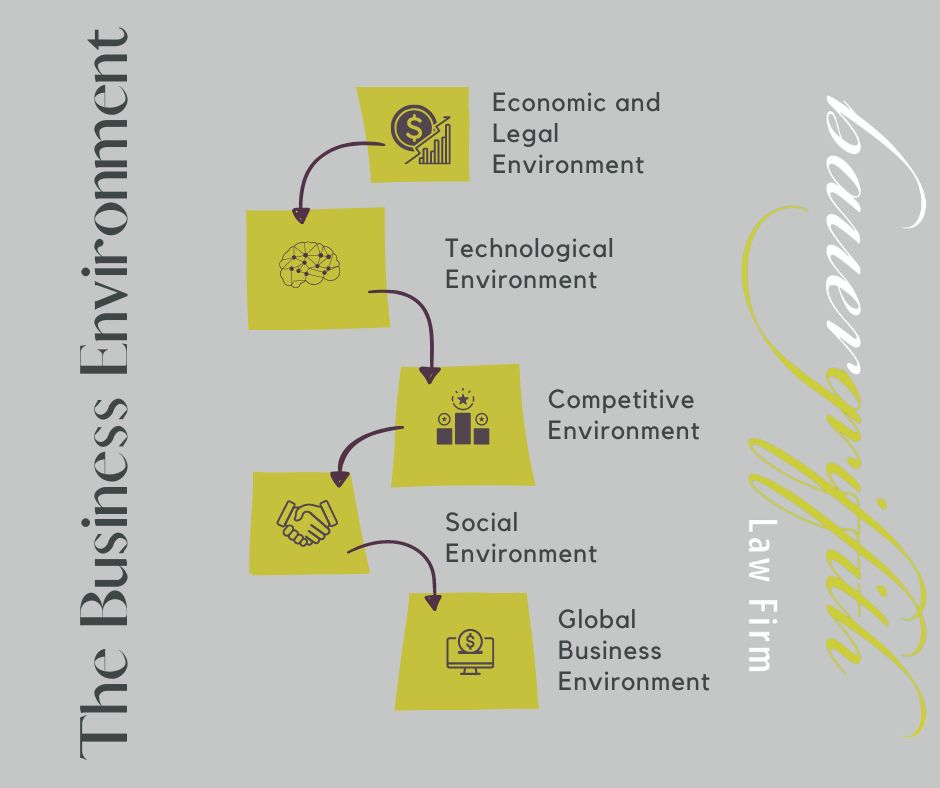
Part 4 – The Business Environment
The business environment is the surrounding factors that either help or hinder business development. These include the economic and legal environment, the technological environment, the competitive environment, the social environment and the global business environment. Businesses that create wealth and jobs should grow and prosper in a healthy environment. Although businesses can’t control their environment, they should pay careful attention so they can adapt as it changes.
People are often willing to start new businesses if they believe the risk of losing their money is not too great. Both the economic system and the way the government works with or against businesses can have a strong impact on the risk level. For instance, government can actively promote entrepreneurship by allowing private ownership of businesses and passing laws that enable people to write enforceable contracts, among others. The Uniform Commercial Code is an example of laws that regulate business agreements such as contracts and warranties, thus allowing companies to know they can rely on one another.
Information technology has had the most comprehensive and lasting impact on businesses, and affects all industries. It has changed the way people communicate with one another, as well as created ways to reach suppliers and customers. Technology is a broad term including phones, computers, copiers, mobile devices, medical imaging machines, robots, the Internet, social media and software programs and apps that make business processes more effective, efficient and productive. Effectiveness means producing the desired result; efficiency is producing goods and services using the least amount of resources; and productivity is the amount of output you generate given the amount of input, e.g. number of hours worked. E-commerce, the buying and selling of goods online, is important in both the business-to-consumer and business-to-business markets.
Competition among businesses seems to be at an all time high. Some have found a competitive edge by focusing on quality which, when coupled with good value, i.e. oustanding service at competitive prices, allows them to stay competitive. Exceeding customer expectations is critical. Today’s consumers want not only good quality and low prices but great service as well. In the past business had been more management-driven, in today’s competitive environment it is more customer-driven. Successful businesses listen more closely to their customers’ wants and needs, then adjust their products, policies and practices accordingly. Part of this customer-oriented shift requires customer-facing workers to have greater responsibility, authority, freedom, training and equipment to respond quickly to customer requests. This empowerment allows frontline workers to provide the great service demanded by today’s consumers.
The U.S. population is going through significant changes that are dramatically affecting where and how people live, what they buy and how they spend their time. The social environment requires companies to manage diversity, including not only minorities and women, as in the past, but also older adults, people with disabilities, married people, singles, those with a different sexual orientation, atheists, extroverts, introverts, religious people, and immigrants, to name but a few. People aged 65-74 are currently the richest demographic in the country, thus representing a lucrative market for many companies. By 2030 the popluation 65 and older will increase by 20%, and by 2050 it will more than double. Products and services for middle-aged and elderly customers will provide excellent opportunities in the 21st century. The number of single parent families is also on the rise, which has had a major affect on businesses, such as encouraging family leave programs and flextime.

